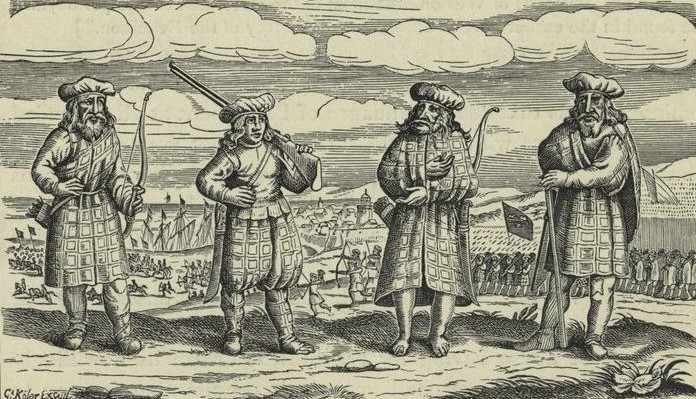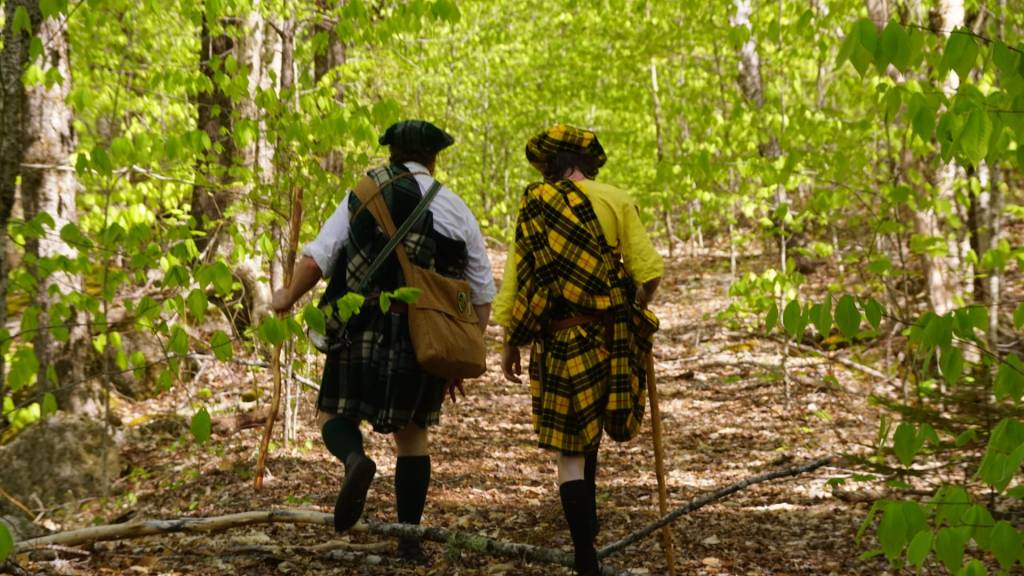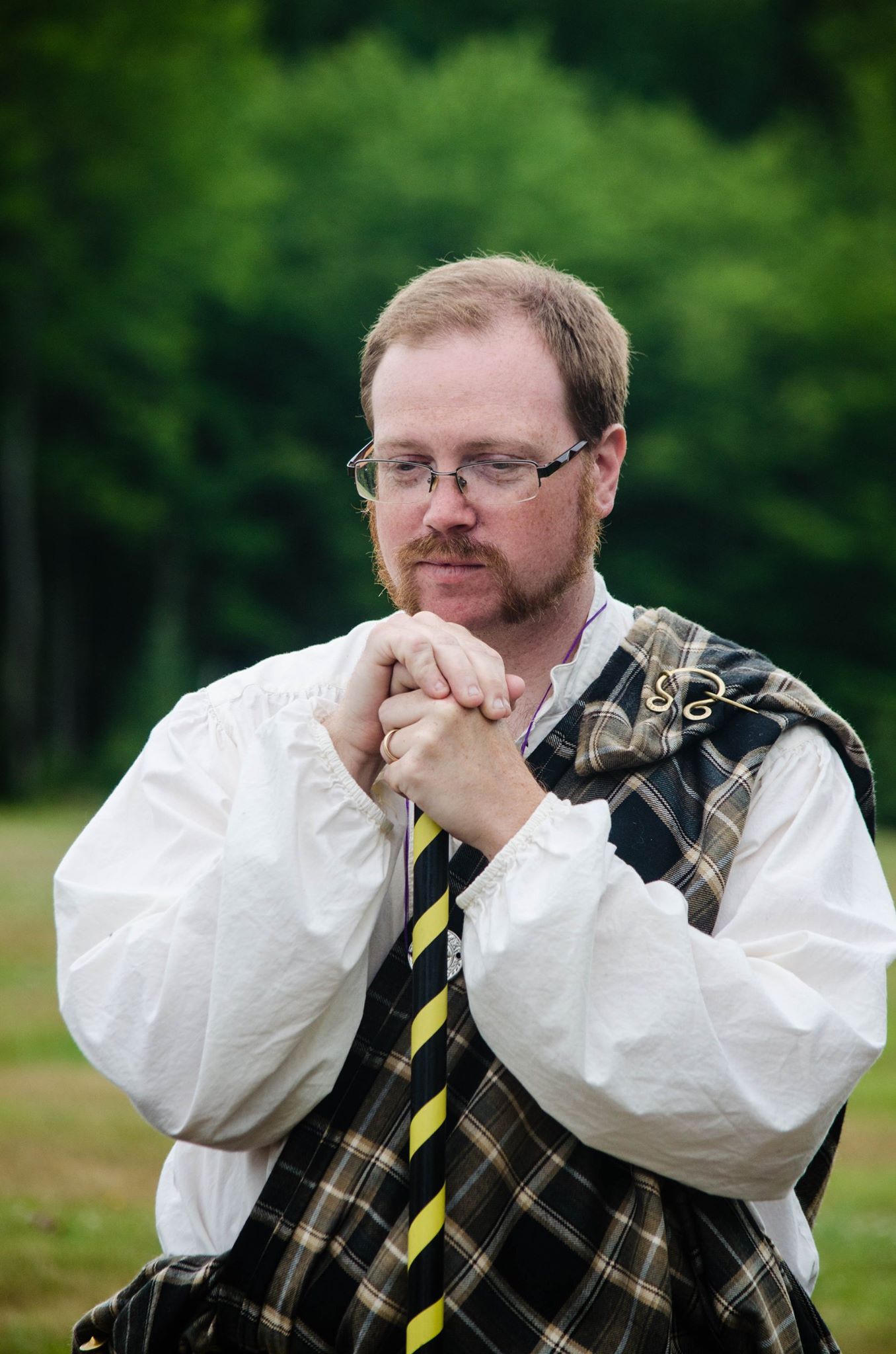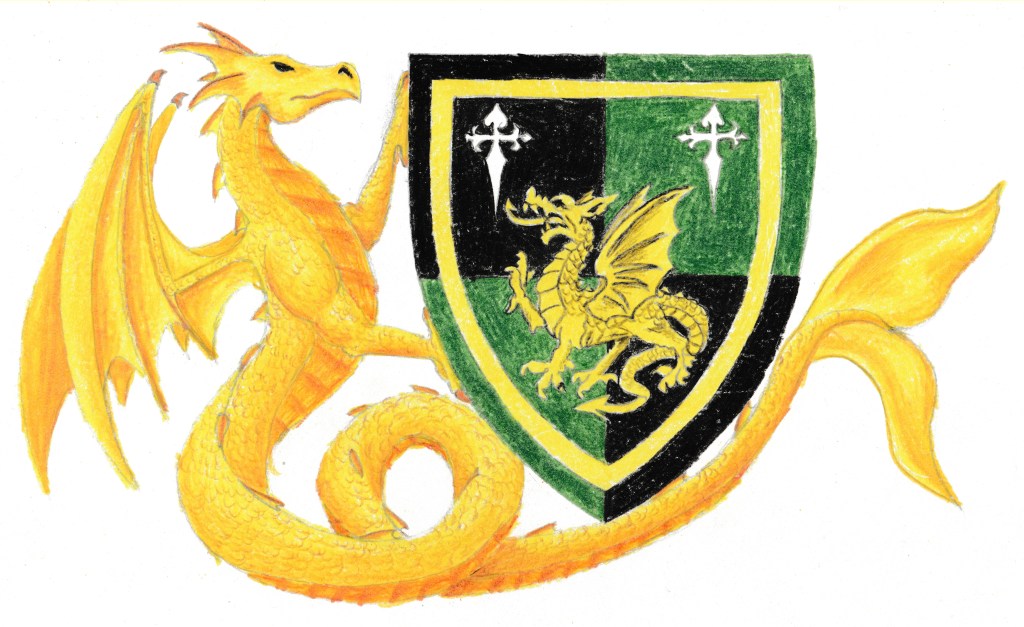There are many forms of garb worn by the Scottish throughout the centuries and here I have styles along with how I made mine.
The main garment I wear is the Great kilt or the belted plaid (breacan an fhéilidh). We think of the kilt as the historical traditional dress of Scottland but that is not accurate. The first documented description of the great kilt is from 1594 in The Life of Aodh Ruadh O Domhnaill transcribed from the book of Lughaidh O’Cleiriigh. Irish Texts Society’s publications, Vol XLII. Part I. Page 73.
“They were recognized among the Irish Soldiers by the distinction of their arms and clothing, their habits and language, for their exterior dress was mottled clocks of many colors (breacbhrait ioldathacha) with a fringe to their shins and calves, their belts were over their loins outside their cloaks. many of them had swords with hafts of horn, large and warlike, over their shoulders. It was necessary for the soldier to grip the very haft of his sword with both hands when he would strike a blow with it. Others of them had bows of carved wood strong for use, with well seasoned strings of hemp, and arrows sharp-pointed whizzing in flight.”
This puts the Great Kilt just within period of the SCA, sliding under the finish line of 1600 AD.

Pictured above is a wood cutting of Scottish mercenaries in the 30 years war. Just out of period but a clear depiction of styles that are plausible for 1600AD (1618AD – 1648AD) Below: My son and I in our kits which include the 100% wool kilts, linen shirts, wool knee high socks and leather shoes.

Most of what we know today about Scottish clothing comes from H.F. McClintock Old Irish & Highland Dress written in 1950. It is considered the definitive work on compiling ancient sources and materials on this matter. Meistr Gwylym ab Owain, OL OP DWS has done a masterful job pulling this information out into a clear and easy to understand article Celtic Dress of the 16th C.
My Great Kilt is made of 5 yards 60″ wide,100% wool, I buy 6 yards and cut off 1 yard to make a matching bonnet. Many people believe it takes 9 – 10 yards of fabric to make a great kilt but this is a misunderstanding. Traditional looms were 25″ – 30″ wide so people would take twice as many yards in length as they wanted, cut it in half, then sew the long edges together to get the desired 50″ – 60″ width fabric. (The Scottish Tartans Museum and Heritage Center) The 5 yards is pleated and belted around my waist. You can do this by laying on the ground to pleat it or standing up and holding the fabric in one hand as you pleat it, then belting around the waist. Leave one fore arms length on either end unplaited, these get wrapped around your front, left over right, to create the solid front panel and overlapping needed. Standing up let the top fabric drape over towards the ground. Take the front edge corners, twist them a few times to gather the fabric loosely and tuck them behind you under the pleated wool in the small of your back. Now take the fabric hanging behind you in spread it out to arms width, then bring the left side over the shoulder and the right side under the arm and across the chest to meet the left shoulder. The wool over the shoulder goes over the wool coming across from below where it gets either pinned together with a penannular brooch or tied with a leather thong. This process also creates pockets in the front and sides of the kilt folds.

